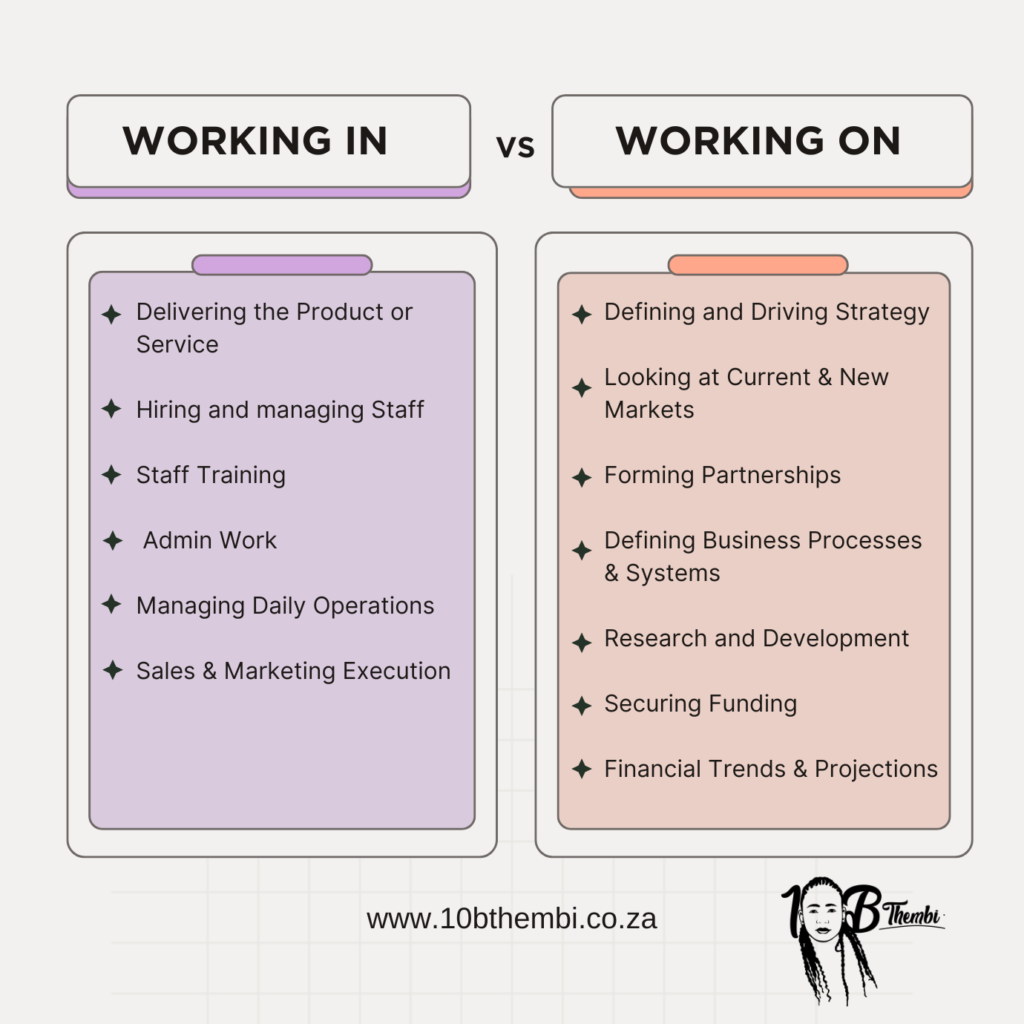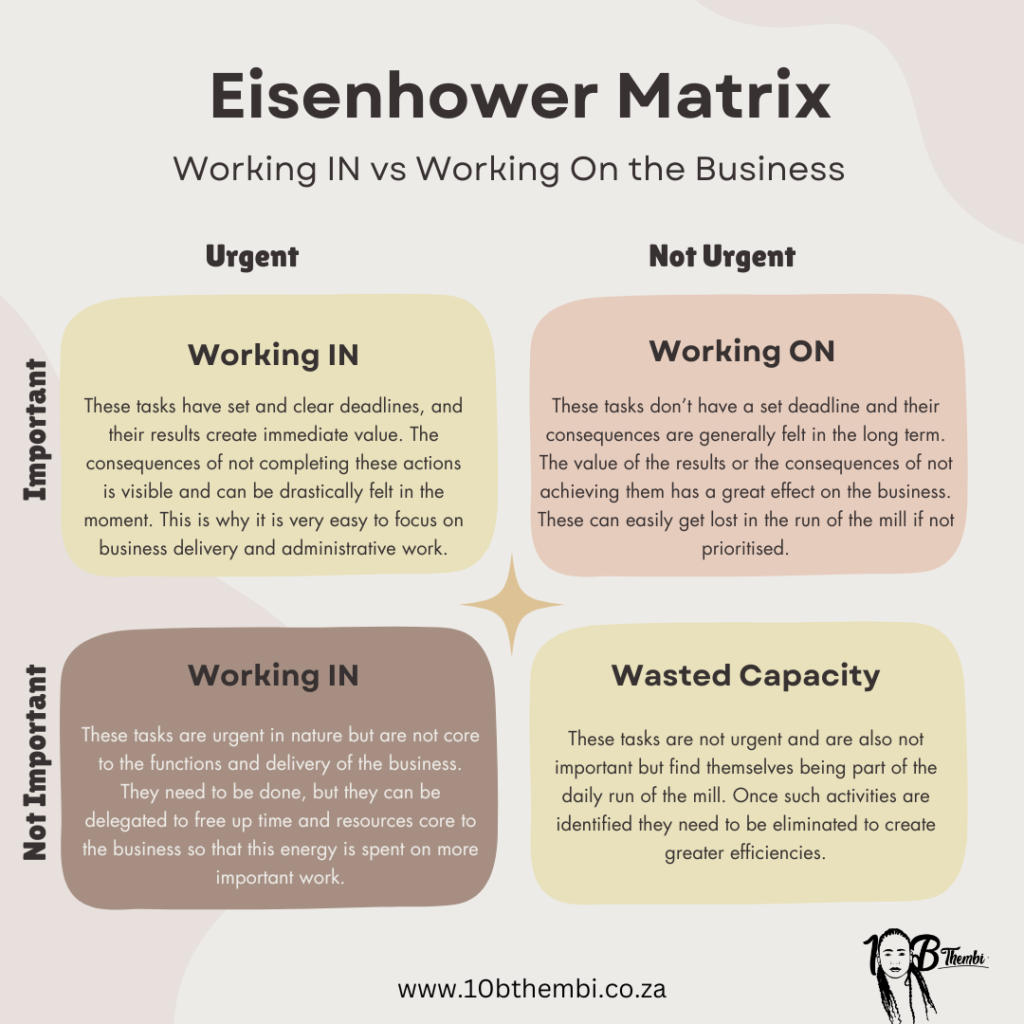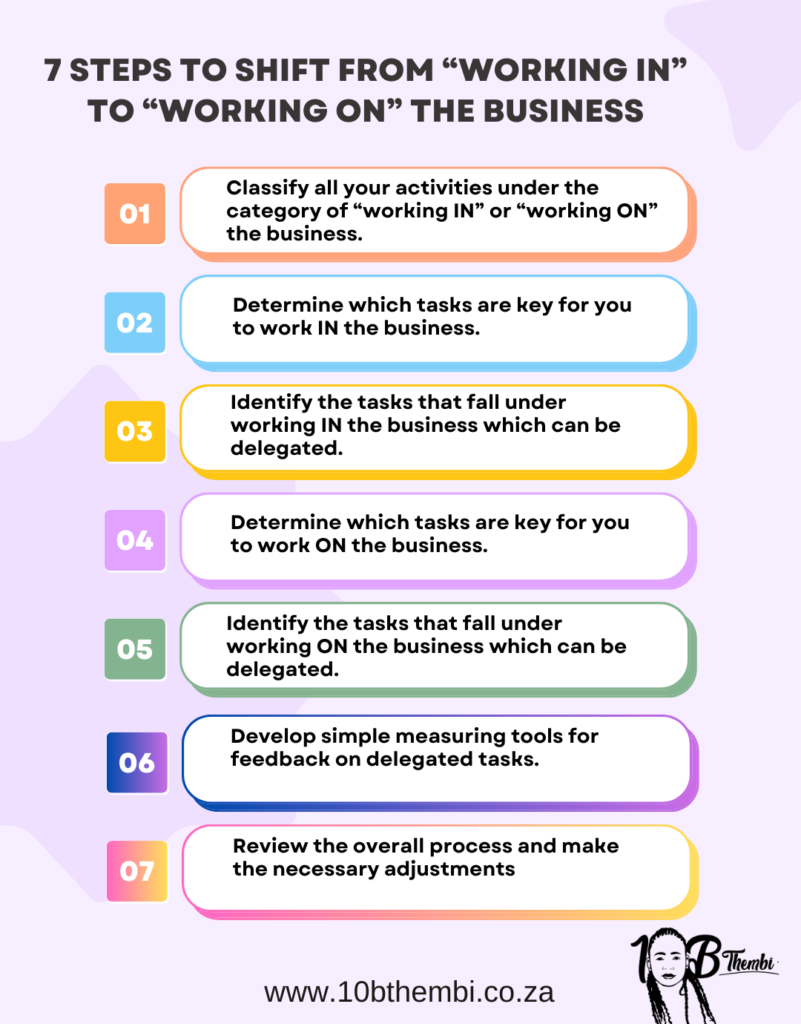Ever wondered why some businesses grow over time and become very good at what they do? As business owners, we are faced with many interesting challenges. Core to this is being the visionary and the main driver to bring the vision to life. With a small to medium enterprise, there are many balls to juggle as you build your enterprise and your team. You can easily find yourself being all things to all men, as you may be core in most of the departments within the business, which does not lend itself well to growth and scale.
Here enters the concept of working IN versus working ON your business, coined by Michael Gerber in his book The E-Myth Revisited. Working IN the business is when you are doing work that fulfils the promise that your business has made to customers. This can take the form of working on a client project physically or mentally. This also includes the design and manufacturing of the product that the client will eventually pay for. Operationally it can take the form of managing people, where you monitor and guide them to deliver the excellence that the business demands. The general truth is that you are generally your “best employee” as the business owner. You can accomplish things right and lead the team best based on your vision. Many people such as your customers, staff, suppliers, and partners also rely on you a lot in the early stages as the business grows and matures.
Working ON the business speaks to things that build the business to be its own self-sustaining entity. These items are more strategic in nature and seek to divorce the business from relying solely on one individual, be it the owner or any key employees. These items can take the form of developing and documenting business processes. Processes can be defined as a set of steps needed to fulfil a predefined outcome. As entrepreneurs, we are generally good at thinking on our feet and solving problems, but this gift can cause challenges and frustrations when it comes to scaling the business.

Examples of business processes include documenting how the people already in the business onboard and train new staff. How do staff go about quoting for the different products and services? How do the people in the business deliver the products on a consistent basis to eliminate the dexterity that the employees will have to handle? What I have painfully learnt over the years is that the more complexity and need for dexterity there is for your team, the higher the likelihood of making mistakes.
When you bring on new staff, they generally need a process to follow for them to assimilate into the business, and thereafter creativity and improvement can take place. If this piece is missing, you generally find the owner or management pulled into even the smallest of decisions or crisis management which is not healthy.
Key to working ON the business is developing and monitoring the execution of the strategy. Strategy is thinking work and generally falls behind when it is in competition with the actual delivery that the business needs to achieve. Some strategic items that usually take a back seat include evaluating the current market and searching for new markets or new clients within the same market. Another item that can be neglected is the evaluation of staff performance and discussing key efficiencies that will lead to improvement over time. It also goes into analysing the financial health and funding of the business, shifting from being reactive to the numbers to being more proactive to the trends of the business and industry over time.

As an entrepreneur, you need to balance working IN versus working ON the business. Working IN the business brings about short-term much-needed benefits whilst working on the business brings longer-term growth and sustainability. Looking at the Eisenhower matrix, Working IN the business generally falls under the “Urgent and Important” whilst working on the business can be seen as “Not Urgent but Important”.
This concept of working IN vs working ON is not only for entrepreneurs and business owners but can be used by management when developing and growing their departments and teams. The main principle becomes how do you lift your head from the day-to-day grind to focus on things that will make the enterprise succeed without you. Being indispensable intrinsically makes one feel special but it is a higher form of leadership to work oneself out of being indispensable to create a legacy of sustainability and scalability.
Below are 7 steps to creating a shift from working IN to working ON:
- Outline your activities and classify them under the category of “working IN” or “working ON” the business.
- Determine which tasks are key for you to work IN the business. It is important to note that this switch can take time to happen. Quickly dropping key tasks that you are key in whilst working IN the business can lead to more damage than good. It is best to plan the transition and find a suitable replacement for those particular roles that you play.
- Identify the tasks that fall under working IN the business that you can outsource and give to other team members or external contractors to manage.
- Determine which tasks are key for you to work ON the business. It is then imperative to prioritise these as the business owner as you build the business to become the ecosystem that will serve you in the long run.
- Identify the tasks that fall under working ON the business that you can also outsource and give to other team members or external contractors to perform.
- Develop a simple measuring tool to track these tasks so you have a meaningful feedback mechanism to see if these delegated tasks are yielding the desired results as planned.
- Review the overall progress and make the necessary adjustments as you build this new skill into the business.
Sometimes the changes need to be drastic but most of the time small consistently measured outcomes yield the best benefits. As the Chinese proverb says, “A journey of a thousand miles begins with a single step”. Taking the steps to improve yourself and your business will yield results if you remain consistent in growth, refining what works and discarding what does not work.




